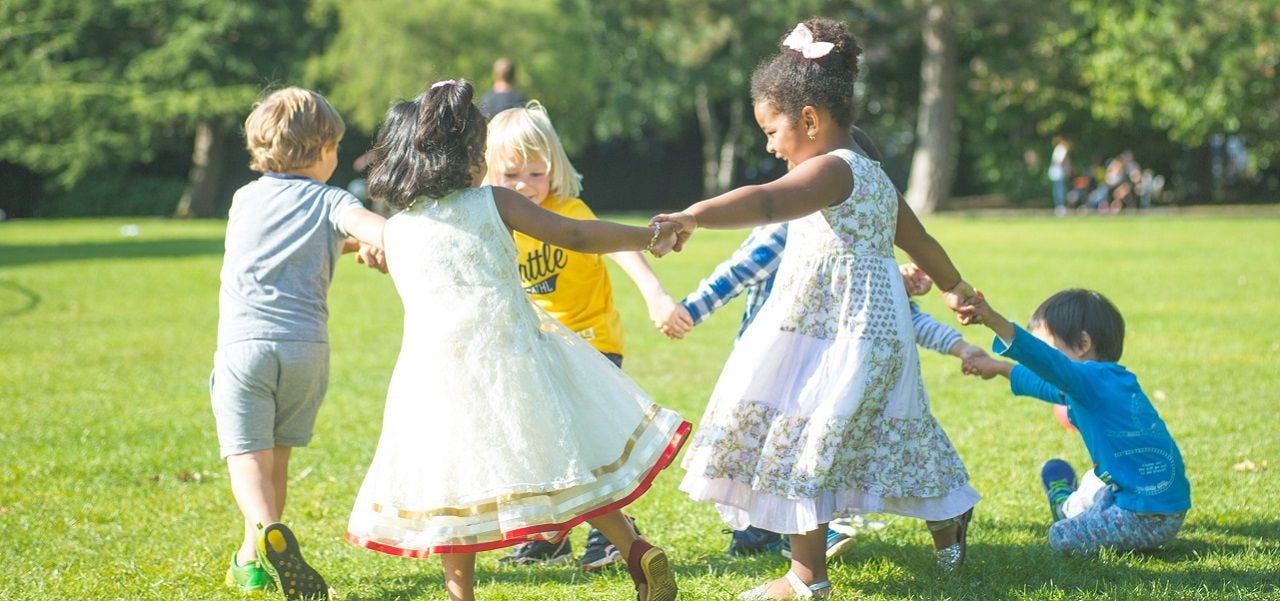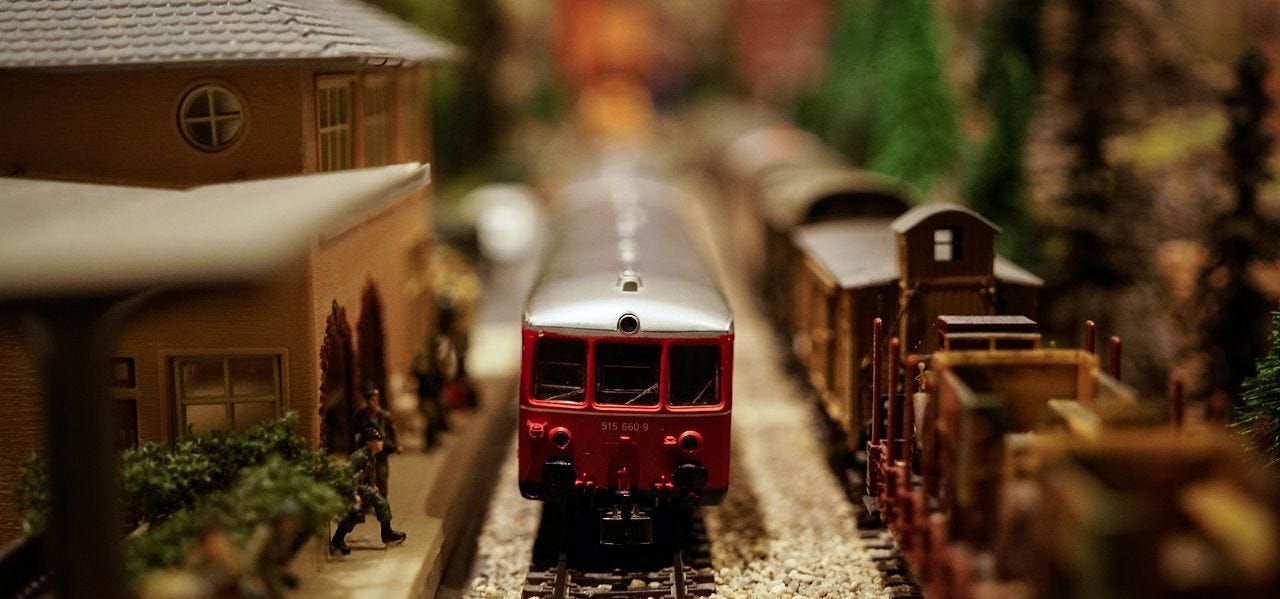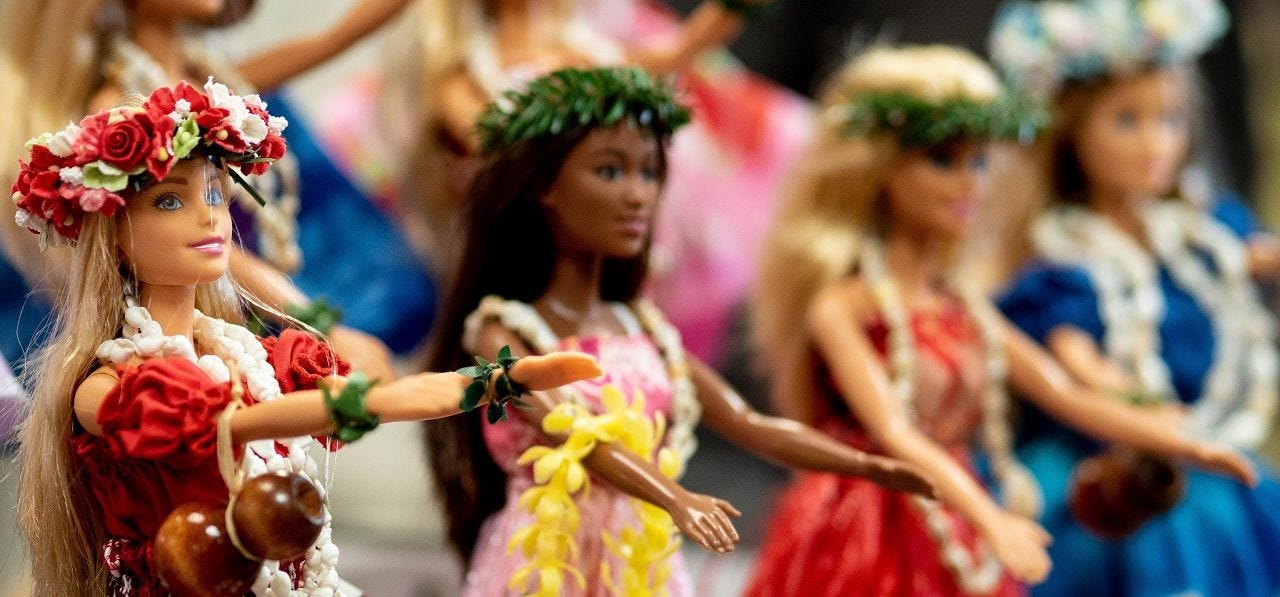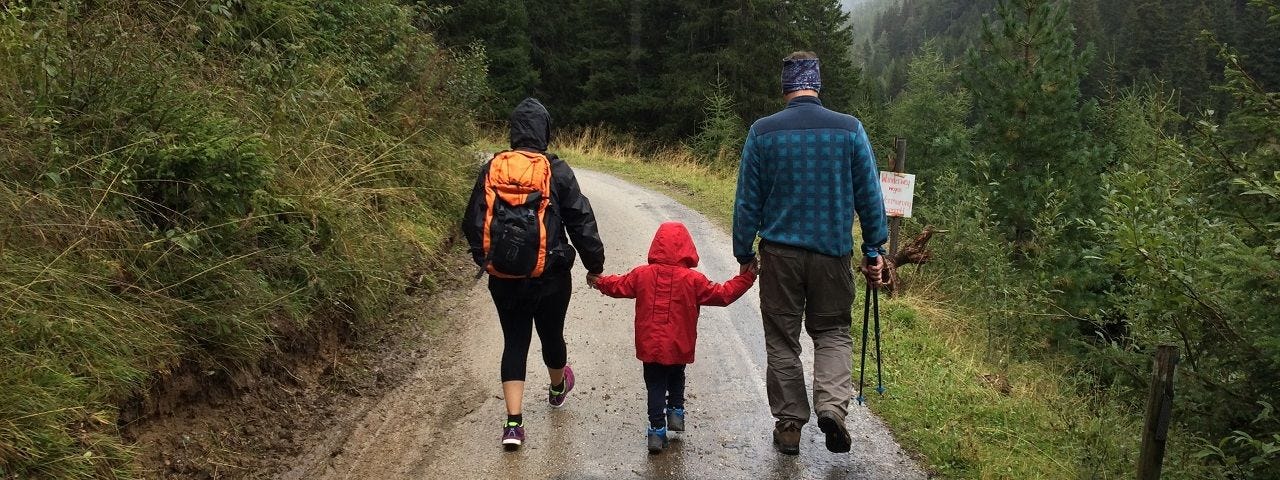What children mean when they “identify”
I’m always astonished when people talk as if a little child’s fantasy of being the opposite sex is something sui generis. Do these people know any children?
I promise to write about Allison Bailey’s tribunal hearing in a future issue. I’ve been listening to much of it, and frantically typing up notes. For minute-by-minute updates, follow @TribunalTweets; I’ll wait until my thoughts about what the questioning has revealed—in particular the extraordinary responses of Kirrin Medcalf on May 10th—have had time to mature before I write more.
I’m always astonished when people talk as if a very little child’s fantasy of being the opposite sex is something sui generis. Do these people know any children? If they do, they must be remarkably unobservant. Children’s play can be extraordinarily immersive and all-encompassing. For some, it can involve a fantasy land, an imaginary friend—or an imaginary self. These can be central to children’s lives and self-perceptions for quite considerable periods.
One of my own children spent around two years, from age two, living life as a train. He adored Thomas the Tank Engine, and had many model trains from the series that he carried everywhere with him in his hands and pockets. Together, they and he had endless conversations and adventures. He used train words to describe his own body—holding his arms out rigidly in front of him and calling them “buffers”; putting his shoes on his “wheels” instead of his feet; describing his food as “fuel”, his torso as an “engine” and his clothes as “paint”. If you watched carefully as he walked around the house muttering “chuffa-chuffa” under his breath, you could see he was moving on imaginary rails, taking corners on a curve, sometimes walking into a wall and reversing back to an imaginary junction, where he would change imaginary points before going off in a different direction.
Don’t get me wrong: he also knew he was a little boy, and so, obviously, did we. And he didn’t do this all the time—just for a large part of every day. But this imaginary life as a train was so central to him that we often played along, joining in the adventures, feeding him “fuel” and so on. One of our nicknames for him was “o trenzinho roxo” (this was around the time we were preparing to move to Brazil, and that’s Portuguese for “little purple train”—purple was his favourite colour at the time).
And then, quite abruptly, he lost interest in trains, around the age of four. I know other families where children went through equally long and meaningful periods living as horses, dogs or dinosaurs. And no one ever suggested that this phase would be permanent, or that our children’s rich inner lives meant they were “born in the wrong body”, and had to be fixed.
I see no reason to take an early, intense fantasy of being a member of the opposite sex any more seriously. In fact, there are good reasons not to play along, as my husband and I did with the train fantasy. One is that humans really do come in two types, male and female, not “train” and “non-train”—and by suggesting that a child can switch between two real, separate, material categories you are interrupting an important developmental process.
It’s been known for decades that small children think that what makes people boys or girls, or men or women, is the way they present themselves—their clothing, hairstyles and so on. Only by the age of seven or so do they fully understand that the deciding factor is bodies. Before that milestone, they think that a boy doll can be made into a girl doll by putting a wig and dress on it, and that the same can be done with a child; after it, they understand that wigs and dresses are a disguise. (Here’s a very sweet video of a little boy before and after making this conceptual leap forward.)
Another good reason is that the fantasy of changing sex may be part of a natural tendency towards gender non-conformity, or may develop as a consequence of the way those around the child respond to such gender non-conformity. And another long-established finding of child psychology is that early, extreme gender non-conformity is statistically linked to growing up gay. Again, you have to be quite ignorant of children not to know this—or quite unobservant, either unconsciously or deliberately.
Every homophobe knows it instinctively. There’s a reason that fathers who don’t want their sons to grow up gay take away their dolls and force them to take up rugby, or hunting, or whatever “manly” men do in their culture. And there’s a reason that playground bullies call the same boys “sissies”, “fags” and “really a girl”. All these people despise both male femininity and homosexuality, and understand the link—seemingly better than so-called “progressives” do. (A similar loathing of lesbianism can motivate attempts to prettify tomboys, although masculinity in girls is somewhat less stigmatised than femininity in boys.)
Attempts to straighten kids out don’t work, of course—and even if they did, there would be no good reason to try, because there’s nothing wrong with being gay. They just make children miserable, and potentially entrench the identification with the opposite sex, since only people of the opposite sex are allowed these forbidden items.
With all that in mind, have a look at this video on “Facilitating a Social Transition”, recently published by Ireland’s largest teaching union, INTO. Judging by animation style and the book it references (“Introducing Teddy: A Story About Being Yourself”), it’s intended for the earliest years of school—when children’s understanding of sex as a physical, bodily reality has probably not yet firmed up. The approach the video suggests would radically disrupt that emerging understanding.
The teacher answers the questions: “So boys can change into girls?” and “Girls can change into boys?” with bald “yeses”. Imagine how terrifying this could be. A child might naturally ask himself or herself: could this happen to my friends? Could it happen to me? And how potentially damaging to the relationship with parents, too—a child who repeats the message of this lesson at home may well find that mum and dad disagree.
Ironically for a lesson that supposedly promotes “diversity” and “acceptance”, it could also lead to an increase in homophobic taunts. The quiet, gentle boy who already gets teased for not liking rough and tumble, and the little tomboy who loathes dresses, are already likely to hear “you’re not a real boy/girl.” And now the teacher has just said it’s possible for girls to be “really boys” and vice versa.
Many of those promoting social transition not only misunderstand children: they misunderstand the relationship of children to those who care for them. I’m not just a mother, I’m an eldest child of nine. My first younger sibling arrived when I was 18 months old; my parents’ 20th grandchild is on the way. A family of this size has always been unusual—I’m currently rereading “Northanger Abbey”, and I’m tickled by the description of the Morlands, who were even more numerous than the Joyces: “A family of ten children will be always called a fine family, where there are heads and arms and legs enough for the number.”
But what has only become unusual in recent years is to have no experience of children of different ages younger than you as you grow up: no minding relatives and neighbours, if not younger siblings; no caring responsibilities; not even the idea that you might ever be expected to look out for someone littler than you. As families have become smaller and more atomised, and more and more people have no children, the sort of familiarity with children, and their vulnerabilities and needs, that I picked up naturally as I grew up is becoming rarer.
For the first time, perhaps, in history, large numbers of adults are divorced from family structures, and never knew any familial or caring relationship except that with their parents. When they imagine an adult-child relationship, they can only imagine themselves as the child—except it’s not really a child, it’s a mini-version of their current self. And the parent they imagine is probably a cipher. They may never have left behind that unattractive childhood tendency to think of parents, mothers in particular, as something between supporting actors and scenery in the drama of the child’s life.
Most parents know their child better than anyone else does. And they care more for their child than anyone else does, too. I remember telling my own children that if someone ever said “don’t tell your parents”, that was the clearest possible sign that this person meant them no good. It’s not that parents never make mistakes, I told them—I certainly made mistakes, and my children knew I did, too. It’s that any adult who wanted to tell my child something, or do something with them, or get them to do something, that I wasn’t to know about, most surely didn’t have my child’s best interests at heart.
I think that these two factors—ignorance about children, and ignorance about the importance of families to child protection—help explain something that initially seemed to me to be completely incomprehensible. That is the astonishing number of people who defend schools not just facilitating social transition, but deliberately neglecting to tell parents that their child has adopted a trans identity. In some American states, this is mandated. (You can watch a short video here of some American teachers explaining how they refuse parental requests to use sex-based pronouns for their child. H/T to Colin Wright, whose Twitter handle is @SwipeWright.)
Practice in the UK varies from school to school. But I have talked to mothers in this country whose children socially transitioned at school while maintaining their “old” identity at home with the connivance of staff. Desperately unhappy children with issues that went well beyond gender were, it seems to me, deliberately alienated from their families—in the name of child welfare and “inclusivity”. In some cases, when children’s dual lives were discovered and parents complained to the schools, they were threatened with being reported to social services, on the grounds that they were “transphobes” who made their children unsafe.
I’m thinking a lot about child safeguarding at the moment, and will be writing more about it, and the failures when it comes to trans identification. There’s so much focus on what happens when parents aren’t good enough, or indeed when they’re truly awful. Horrific suffering is possible, and much safeguarding is dedicated to spotting such situations before it’s too late.
But children whose parents don’t look after them are not usually looked after better by someone else. I’m not talking about devoted relatives, like a grandmother who steps in to care for her drug-addicted daughter’s children, or adoptive parents who have found another, enormously fulfilling, path to parenthood. I’m talking about the poor little people who are handed around like parcels between care homes and foster homes, and who are never able to be happy as a result. States make awful parents, in other words. Similarly, schools and teachers can never take the place of family and parents, and they shouldn’t try to.





